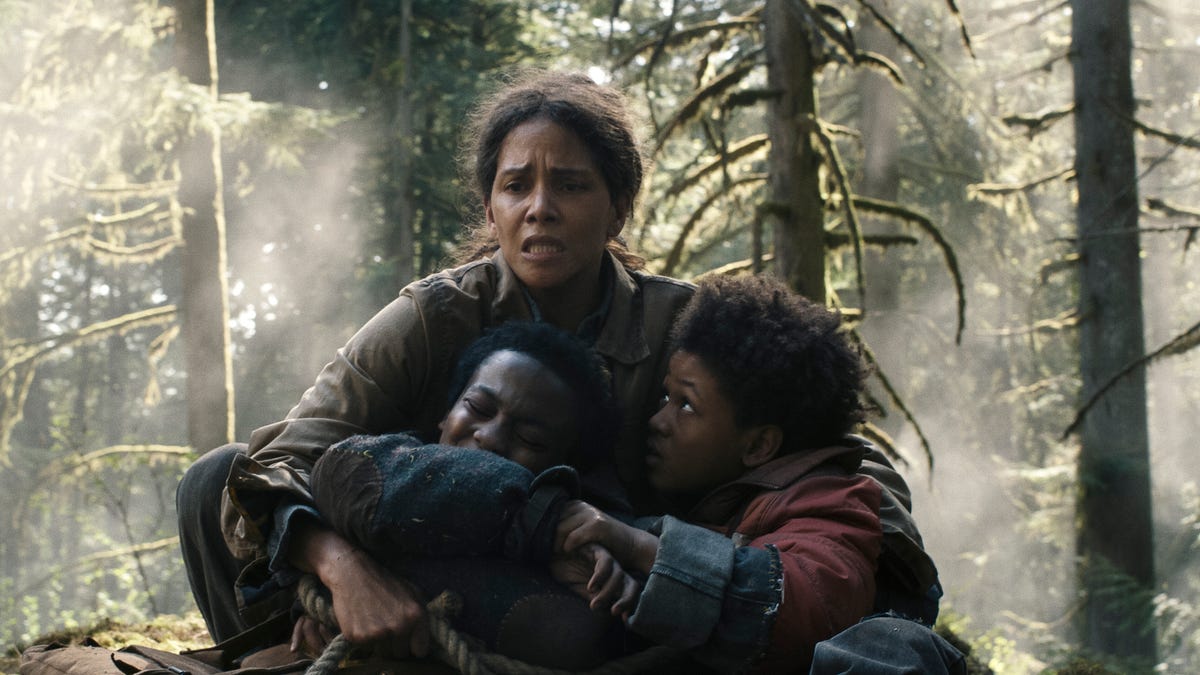Spoilers Ahead! Halle Berry Reflects on the Ending of ‘Never Let Go’
Warning: Spoilers! In this discussion, we’ll delve into critical plot points and the conclusion of “Never Let Go” (currently in theaters), so tread carefully if you haven’t seen it yet.
After 16 years of motherhood, Halle Berry is prepared to showcase her fierce “mama bear” instincts, in both real-life scenarios and when facing terrifying survival challenges on screen.
In the new horror film “Never Let Go,” directed by Alexandre Aja, Berry plays a character named Momma, who goes to extreme measures to protect herself and her two young sons from an ominous Evil she believes could infect them. The ambiguity surrounding whether this Evil is real or merely a figment of her imagination raises questions—could this be a story about mental health, or perhaps a metaphor for the COVID pandemic? Regardless, Berry stands firmly by Momma’s tough choices throughout the narrative.
“I deeply relate to the instinct to fiercely defend your children, even when it might not be the favored choice,” Berry states. “Being a mother means you stop caring about others’ opinions regarding your parenting and how you fight for your kids.”
Since their birth, siblings Sam (Anthony B. Jenkins) and Nolan (Percy Daggs IV) have known only life in a secluded cabin. Momma teaches them that an Evil force has devastated the outside world, making their home a safe haven. They rely on ropes for hunting, ensuring they stay tethered to avoid being “infected” by this Evil.
Berry chose to star and produce this film because it reveals “the complexities of our lives, and how unsettling our world can be,” she notes.
Is the Evil Real, or Is Momma Just Imagining It in ‘Never Let Go’?
The Evil appears to Momma in nightmarish forms, including ghostly versions of her deceased parents and the father of her children, whom she may have murdered. Berry describes that her sons embody “the best and worst aspects of her.” While Nolan begins to doubt their isolated existence and questions the reality of the Evil, Sam, much like his mother, is ready to do anything to survive, even if it means harming his cherished dog to stave off hunger.
Momma wrestles with her own mental state, Berry explains. “If the Evil is real, and it has confined you to this isolated life with only your two sons, foraging for food in such dire conditions, wouldn’t that drive anyone mad?”
However, Berry’s character balances precariously between safeguarding her kids and inflicting distress upon them. When they stray from their ropes—whether by choice or by mistake—Momma threatens them with a knife, forcing them to pray to ensure they are not tainted, or she confines them to a cellar. “If one of them were to become infected, she believes she would have to eliminate them to shield the other and ensure the family’s survival,” Berry shares.
A pivotal moment occurs two-thirds into the film, where Momma faces off against the Evil representation of her deceased mother. (The black sludge oozing from her mouth suggests Momma might have poisoned her.) Terrified that she could become possessed and harm her children, she slashes her own throat with a shard of glass.
“We aren’t sure if she is experiencing visions due to schizophrenia or another mental disorder. But for her, whatever she perceives is undeniably real,” Berry elucidates. This moment raises crucial questions for the audience: “What fate awaits these two boys if their protective mother is gone? How will they manage and can they even survive? Ultimately, they need to embark on their own journey to uncover the truth.”
The Conclusion of ‘Never Let Go’ Is Up for Interpretation—That’s Intentional
“Never Let Go” intentionally opens itself up to various interpretations. Following their mother’s demise, Nolan and Sam encounter a hitchhiker, revealing a broader world still teeming with life. In a shocking twist, Sam kills the hitchhiker, believing him to be the Evil. The narrative takes a darker turn as Sam betrays his brother by igniting the cabin, trapping Nolan inside. As events unfold, the questions of sanity and survival only deepen.
Nolan manages to escape, and both he and the medics find themselves saved.
However, just as you think the evil force was merely a figment of imagination, the closing scene reveals Sam’s Polaroid featuring a ghostly hand within the picture.
Berry reflects on this, stating, “The conclusion resonates differently depending on your perspective, what you seek from the ending, and your beliefs about yourself and the world. Everyone’s spiritual or religious views shape their interpretation of the conclusion. The beauty lies in its ambiguity, allowing each individual to derive their understanding of the truth. It mirrors real life—we all perceive things differently and hold unique opinions. I truly appreciate that aspect.”

